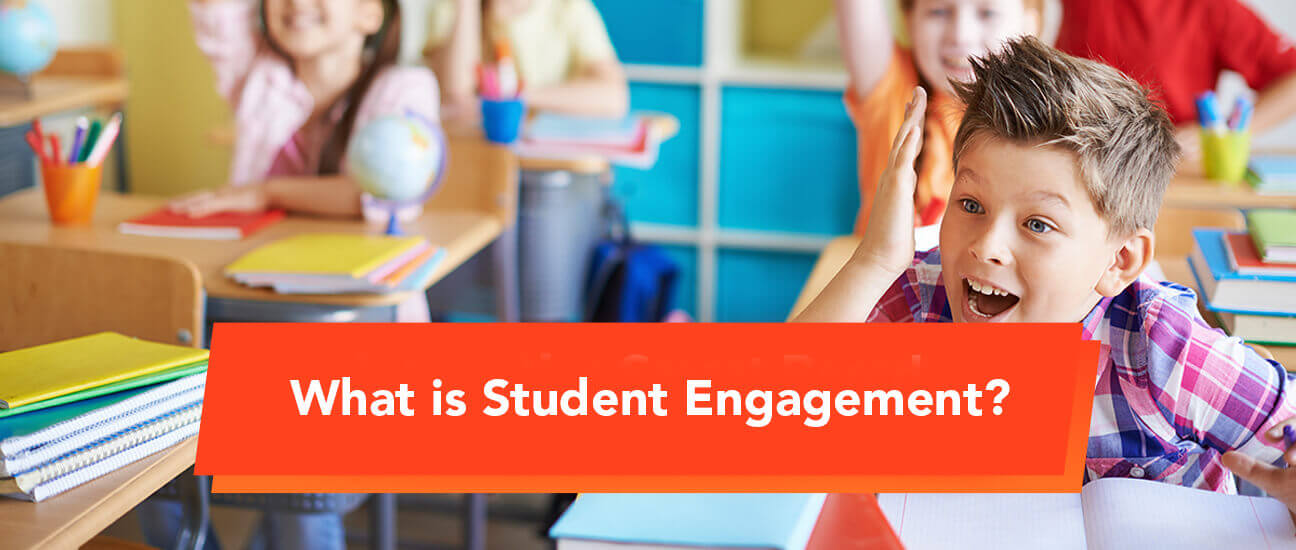Student engagement is a commonly discussed concept which all educators agree is of vital importance. It’s a large part of the reason tools such as interactive whiteboards (also known as interactive displays) and educational software play such a key role in classrooms today.
Despite the discourse around the topic, it can still feel a little nebulous at times, however. Just as there are countless ways to engage your students, so there are even more ways to define and measure engagement.
In this blog, we’ll drill down into student engagement to help you better understand the main concepts. We will:
- Discuss the differing definitions of student engagement to establish what really matters
- Go through a short history of student engagement and how it has evolved in recent times
- Help you understand why student engagement is so important and how can track and measure it
Read on to find out more.
Defining student engagement
Student engagement can be difficult to define. While the term has been widely used since gaining initial popularity in the 90s, definitions vary.
Some researchers of the subject describe student engagement as “an individual’s interest and enthusiasm for school, which impacts their academic performance and behavior,” while others define it simply as “energy in action.” The Glossary of Education Reform offers a more specific definition, describing student engagement as, “the degree of attention, curiosity, interest, optimism, and passion that students show when they are learning or being taught, which extends to the level of motivation they have to learn and progress in their education.”
What’s more, as the world of education evolves, our understanding of student engagement continues to adapt. In today’s learning landscape, where education takes place in the classroom, online, and in a myriad of hybrid arrangements, we’re seeing expanded definitions of student engagement as we learn more about new facets of the student experience.
But as countless definitions of student engagement abound, there is common ground among them. Central to any definition of student engagement is the belief that learning improves when students are curious, interested, or inspired, and that learning is negatively impacted when students are dispassionate, bored, or otherwise disengaged. As such, advancing student engagement is a key objective for educators around the world.
The history of student engagement
The term ‘student engagement’ has been widely used for decades, starting in 1996 when it was first identified as a new buzzword within education circles. As the world of education has evolved, so has the meaning behind “student engagement.” The term’s definition has taken on several iterations and in the current landscape where several learning environments coexist, including in-classroom, distance and hybrid, we are seeing more changes around how we discuss engagement in education.
Today we find that student engagement continues to be difficult to define in a single, static way. While it’s a commonly used concept among educators to discuss general educational strategies and teaching techniques that enhance learning for students, it is a complex, multifaceted term, which can make it difficult to understand.
While there are multiple definitions around student engagement, there is a common theme among them. The shared concept of the different beliefs around student engagement is rooted in the idea that learning improves when students are curious, interested, or inspired, and that learning is negatively impacted when students are dispassionate, bored or otherwise disengaged. As such, educators around the world see stronger or improved student engagement as a key objective within their classes and mixed teaching environments.
The three dimensions of student engagement
While there is some variation with the breadth of student engagement, there are mainly three types of engagement that fall within its umbrella. These different kinds of engagement that occur in learning are:
- Emotional EngagementThis refers to students’ feelings about their teacher, classroom environment, and general school experience. It also includes a student’s sense of belonging and how valuable they view their work to be.
- Behavioral EngagementBehavioral student engagement addresses how attentive and active students are in the classroom and with a school in general. For example, does the student have involvement in any extracurricular activities related to the school?
- Cognitive EngagementThis refers to how intrinsically motivated and invested students are in their own learning process and how much they regulate and take ownership of it.
Students have the most comprehensive engagement and learn best when all three of these areas of engagement are met.
Measuring student engagement
While many teachers have a working definition of student engagement and strategies in place to drive engagement in your students, effective measurement is an altogether more difficult task.
Student behavior may give you an idea of how engaged they are with your lessons but real actionable insights need to be better defined and measured.
Using the three dimensions of student engagement provides the ideal baseline to begin measuring student engagement, establishing which of these have been met on a student-by-student level gives you the insights you need to make better decisions for learners. Popular tools and tactics you can use to measure these individual dimensions and define student engagement are:
- Classroom participation. While this is an effective way of measuring engagement in the classroom, teachers do need to tread carefully. Establish clear guidelines for what participation includes and track these accordingly for a more unbiased look at how students participate in the classroom. You also need to bear in mind individual student personalities – people who are naturally shy will be less inclined to speak up and actively participate in many ways, despite being incredibly engaged in the subject matter. Trying to force this can have the opposite of the intended effect and lead to the student disengaging and becoming withdrawn from lessons.
- Undertaking formal assessments is a common method of measuring engagement. Use tests or exams on a regular basis to measure student progress and highlight areas of weakness for students, you can utilize this knowledge to help you tweak your approach to better engage students in key areas of concern.
- Student feedback via anonymous surveys can provide you with key insights your learners may otherwise be worried about sharing due to fear of getting into trouble. You could also ask students to mark their own participation each week to establish how engaged they feel they are.
By engaging in this type of measurement on both a macro (a student’s engagement with school as a whole) and micro (a student’s engagement level on a course-specific basis), you gain a much better picture of how engaged your pupils are and arm yourself with the ability to quickly course correct should students start to disengage.
Why student engagement is important
Educators hold student engagement in high esteem because when students are engaged, it means they are taking an active role in their own learning.
In an era where hybrid learning environments are becoming more common, there can be a struggle to keep everything about the student experience consistent. While COVID-19 introduced new barriers to student engagement, it also spurred creative methods of keeping remote and hybrid learners engaged. Even amidst challenging times, a sense of strong student engagement must remain critical as it predicts a multitude of important factors including:
- Academic grades
- Test scores
- Learning
- Class attendance
- School retention
- School graduation
- Academic resilience
Students who are engaged in the school achieve greater academic success. Furthermore, another noteworthy benefit is that students who exhibit strong student engagement are less likely to fall victim to potential adolescent trouble, which is often related to drop out risk.
While there are multiple definitions of student engagement that have each seen their own retooling through time, there is common ground regarding its importance in education. Consistent student engagement is key to student success inside of the classroom and beyond.
Advancing Student Engagement with Promethean
Promethean gives schools and teachers the tools they need to drive meaningful, sustained student engagement in both hybrid and in-person learning environments.
The Promethean ActivPanel is designed to enable intuitive learning experiences with more opportunity for interactivity. Every panel comes preloaded with a suite of premium teaching tools and student engagement features, including infinite canvas, screen capture, screen share, spinner, timer and more.
Ready to learn more? Schedule your free demo with a Promethean expert today!




